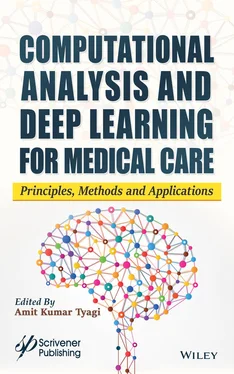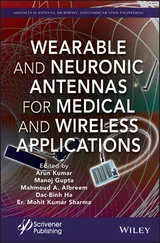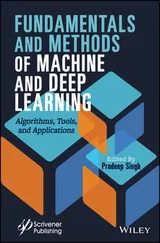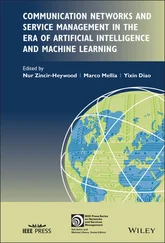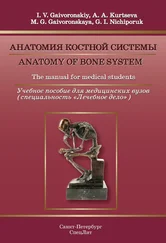Based on the above facts, some reliable deep learning and deep neural network models for healthcare applications are contained in this book on computational analysis and deep learning for medical care. These chapters are contributed by reputed authors; the importance of deep learning models is discussed along with the issues and challenges facing available current deep learning models. Also included are innovative deep learning algorithms/models for treating disease in the Medicare population. Finally, several research gaps are revealed in deep learning models for healthcare applications that will provide opportunities for several research communities.
In conclusion, we want to thank our God, family members, teachers, friends and last but not least, all our authors from the bottom of our hearts (including publisher) for helping us complete this book before the deadline. Really, kudos to all.
Amit Kumar Tyagi
Part 1 DEEP LEARNING AND ITS MODELS
1
CNN: A Review of Models, Application of IVD Segmentation
Leena Silvoster M.1* and R. Mathusoothana S. Kumar2
1 Department of Computer Science Engg, College of Engg, Attingal, Thiruvananthapuram, Kerala, India
2 Department of Information Technology, Noorul Islam University, Tamilnadu, India
Abstract
The widespread publicity of Convolutional Neural Network (CNN) in various domains such as image classification, object recognition, and scene classification has revolutionized the research in machine learning, especially in medical images. Magnetic Resonance Images (MRIs) are suffering from severe noise, weak edges, low contrast, and intensity inhomogeneity. Recent advances in deep learning with fewer connections and parameters made their training easier. This chapter presents an in-depth review of the various deep architectures as well as its application for segmenting the Intervertebral disc (IVD) from the 3D spine image and its evaluation. The first section deals with the study of various traditional architectures of deep CNN such as LeNet, AlexNet, ZFNet, GoogleNet, VGGNet, ResNet, Inception model, ResNeXt, SENet, MobileNet V1/V2, and DenseNet. It also deals with the study of the parameters and components associated with the models in detail. The second section discusses the application of these models to segment IVD from the spine image. Finally, theoretically performance and experimental results of the state-of-art of the literature shows that 2.5D multi-scale FCN performs the best with the Dice Similarity Index (DSC) of 90.64%.
Keywords: CNN, deep learning, intervertebral disc degeneration, MRI segmentation
The concept of Convolutional Neural Network (CNN) was introduced by Fukushima. The principle in CNN is that the visual mechanism of human is hierarchical in structure. CNN has been successfully applied in various image domain such as image classification, object recognition, and scene classification. CNN is defined as a series of convolution layer and pooling layer. In the convolution layer, the image is convolved with a filter, i.e., slide over the image spatially and computing dot products. Pooling layer provides a smaller feature set.
One major cause of low back pain is disc degeneration. Automated detection of lumbar abnormalities from the clinical scan is a burden for radiologist. Researchers focus on the automation task of the segmentation of large set of MRI data due to the huge size of such images. The success of the application of CNN in various field of object detection enables the researchers to apply various models for the detection of Intervertebral Disc (IVD) and, in turn, helps in the diagnosis of diseases.
The details of the structure of the remaining section of the paper are as follows. The next section deals with the study of the various CNN models. Section 1.3, presents applications of CNN for the detection of the IVD. In Section 1.4, comparison with state-of-the-art segmentation approaches for spine T2W images is carried out, and conclusion is in Section 1.5.
1.2 Various CNN Models
1.2.1 LeNet-5
The LeNet architecture was proposed by LeCun et al . [1], and it successfully classified the images in the MNIST dataset. LeNet uses grayscale image of 32×32 pixel as input image. As a pre-processing step the input pixel values are normalized so that white (background) pixel represents a value of 1 and the black (foreground) represents a value of 1.175, which, in turn, speedup the learning task. The LeNet-5 architecture consists of succession of input layer, two sets of convolutional and average pooling layers, followed by a flattening convolutional layer, then two fully connected layers, and finally a softmax classifier.
The first convolutional layer filters the 32×32 input image with six filters. All filter kernels are of size 5×5 (receptive field) with a stride of 1 pixel (this is the distance between the receptive field centers of neighboring neurons in a kernel map) and uses “same” padding. Given the input image of size 28×28, apply six convolutional kernels each of size 5×5 with stride 1 in C1, the feature maps obtained is of size 14×14. Figure 1.1shows the architecture of LeNet-5, and Table 1.1shows the various parameter details of LeNet-5. Let Wc is the number of weights in the layer; Bc is the number of biases in the layer; Pc is the number of parameters in the layer; K is the size (width) of kernels in the layer; N is the number of kernels; C is the number of channels in the input image.
(1.1) 
(1.2) 
In the first convolutional layer , number of learning parameters is (5×5 + 1) × 6 = 156 parameters; where 6 is the number of filters, 5 × 5 is the filter size, and bias is 1, and there are 28×28×156 = 122,304 connections. The number of feature map calculation is as follows:
(1.3) 
(1.4) 
W = 32; H = 32; F w= F h= 5; P = 0, and the number of feature map is 28 × 28.
First pooling layer : W = 28; H = 28; P = 0; S = 2
(1.5) 

Figure 1.1 Architecture of LeNet-5.
Table 1.1 Various parameters of the layers of LeNet.
| Sl no. |
Layer |
Feature map |
Feature map size |
Kernel size |
Stride |
Activation |
Trainable parameters |
# Connections |
| 1 |
Image |
1 |
32 × 32 |
- |
- |
- |
- |
- |
| 2 |
C1 |
6 |
28 × 28 |
5 × 5 |
1 |
tanh |
156 |
122,304 |
| 3 |
S1 |
6 |
14 × 14 |
2 × 2 |
2 |
tanh |
12 |
5,880 |
| 4 |
C2 |
16 |
10 × 10 |
5 × 5 |
1 |
tanh |
1516 |
151,600 |
| 5 |
S2 |
16 |
5 × 5 |
2 × 2 |
2 |
tanh |
32 |
2,000 |
| 6 |
Dense |
120 |
1 × 1 |
5 × 5 |
1 |
tanh |
48,120 |
48,120 |
| 7 |
Dense |
- |
84 |
- |
- |
tanh |
10,164 |
10,164 |
| 8 |
Dense |
- |
10 |
- |
- |
softmax |
- |
- |
|
|
|
|
|
|
|
60,000 ( Total) |
|
(1.6) 
Читать дальше
